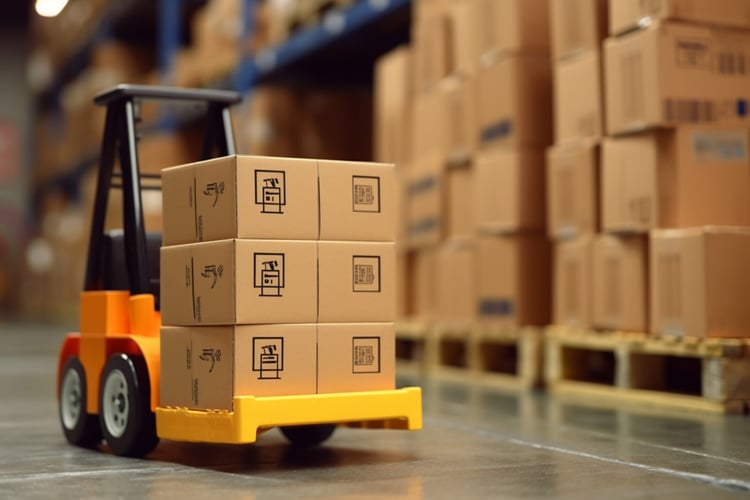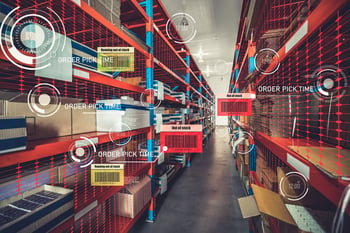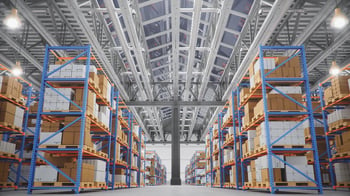
Warehousing, distribution, and order fulfillment must continue to evolve to meet various challenges and changing consumer demands. Faced with expanding omnichannel options and the ability to leverage technology to address different inefficiencies, businesses in these industries have many opportunities for unprecedented gains. Here are some of the challenges still facing the warehousing industry and some top predictions for order fulfillment in 2024 and beyond.
State of the Warehousing Industry Approaching 2024
eCommerce sales surpassed the incredible milestone of $1 billion in 2023, and the market continues to expand. But that doesn’t mean there haven’t been some challenges and growing pains. According to a recent “Warehouse Vision Study” released by Zebra, the fulfillment industry still faces several serious challenges.
Technology Utilization
 As warehouses get larger and more complex, the most overwhelming issue faced by these businesses is figuring out how to use technology to benefit the business. Specifically, organizations are struggling with what to prioritize in terms of implementing technology solutions while balancing the needs of day-to-day operations.
As warehouses get larger and more complex, the most overwhelming issue faced by these businesses is figuring out how to use technology to benefit the business. Specifically, organizations are struggling with what to prioritize in terms of implementing technology solutions while balancing the needs of day-to-day operations.
Labor Recruitment & Efficiency
While the U.S. isn’t considered to be in a recession at the end of 2023, the warehouse and fulfillment industry continues to struggle with labor issues. Over half (60%) of Zebra’s survey respondents cite labor recruitment as a serious concern over the next five years. Hiring talent is just the first hurdle, as businesses in this industry must also find ways to improve the productivity and efficiency of their labor force.
Capacity Utilization
Another real challenge faced by businesses in this industry is how to maximize the usefulness of their current infrastructure. Warehouses have become increasingly spacious, but those large buildings come with their own set of challenges.
Inventory Management
Omni-channel fulfillment has created new opportunities to improve the customer experience and explore different inventory and fulfillment strategies. But it has also created new challenges. Specifically, businesses must generate more visibility throughout internal and external systems to improve inventory management and the supply chain process as a whole.
6 Predictions for Fulfillment in 2024 (and Beyond)
Fortunately, businesses in these industries are employing a combination of strategies to address their ongoing challenges. Here are some of the top predictions for order fulfillment in 2024 and the following years.
1. Increased Digitization
 The biggest trend we’ll continue to see play out in the coming year is the digitization of the supply chain and the order fulfillment process. Instead of being something industry leaders do, digital transformation has become a requirement to have a seat at the table.
The biggest trend we’ll continue to see play out in the coming year is the digitization of the supply chain and the order fulfillment process. Instead of being something industry leaders do, digital transformation has become a requirement to have a seat at the table.
Organizations will continue to implement digital solutions, such as warehouse management systems (WMS), to manage their overall business. These robust systems offer inventory management, drive fulfillment processes, help with warehouse optimization, and deliver more visibility throughout the supply chain.
2. More Automation Solutions
The order fulfillment process is ripe for various levels of automation. While only a handful of companies are moving toward full (dark warehouse) automation, others are implementing different automation solutions to address labor shortages and improve overall efficiency.
Robotics can be used for automated picking and packing in the warehouse. Combined with RFID tags, warehouses are also using pick-to-light and mobile carts to improve the picking process and reduce errors.
3. Better Warehouse Layouts
 Whether your warehouse is massive or just the right size, there is a growing trend toward optimizing the space you have to improve safety, productivity, and even sustainability. Fortunately, you don’t have to do this by hand. Businesses are using artificial intelligence (AI) tools to create better warehouse layouts and processes, which can help reduce risks and take advantage of opportunities for gains.
Whether your warehouse is massive or just the right size, there is a growing trend toward optimizing the space you have to improve safety, productivity, and even sustainability. Fortunately, you don’t have to do this by hand. Businesses are using artificial intelligence (AI) tools to create better warehouse layouts and processes, which can help reduce risks and take advantage of opportunities for gains.
4. Omnichannel Fulfillment
One valuable lesson coming out of the pandemic is that businesses need to maximize every opportunity to be successful. Whether strategic or by accident, retailers discovered that consumers like choices in how their orders are fulfilled. This has given rise to the massive growth of omnichannel fulfillment.
As we enter 2024, you can expect to see even more businesses offering options like Buy-Online-Pickup-In-Store (BOPIS), and reserve online, pick up in-store (ROPIS). Your business can create the best inventory omnichannel fulfillment strategy that meets the needs of its customers.
5. Direct-to-Consumer Fulfillment
Many consumers don’t want to deal with a “middleman,” like Amazon or Walmart, when purchasing certain products. They want to go straight to the source and have products shipped to their doorstep. This direct-to-consumer fulfillment might be new for some brands, but it can be profitable when done correctly.
Just because a consumer wants to buy directly from Brand X, that doesn’t mean it needs to be shipped from that company’s headquarters. Brand X can certainly contract with a reputable distributor to handle this part of its business.
6. Real-Time Information Availability
Another hard lesson learned over the past several years is that supply chain disruptions happen due to a lack of data. In other words, if inventory or shipping information is days or even hours old, it’s unreliable and more likely to result in costly disruptions.
In 2024, businesses will continue to emphasize the need for real-time data in the order fulfillment process. Using RFID tags, mobile carts, and warehouse management systems, stakeholders can get instant access to valuable information. Supply chain partners are also increasingly sharing this data to inject more visibility throughout the supply chain.
The supply chain and warehousing industry has faced many challenges in recent years, forcing organizations to rethink how they approach order fulfillment. By embracing innovative processes and new technology, many businesses are enjoying opportunities to build more intelligent, efficient, and sustainable fulfillment processes.












